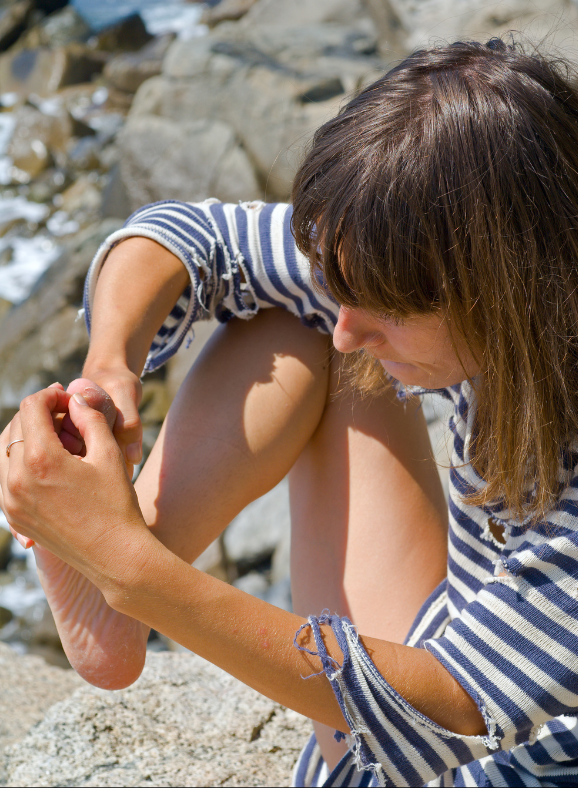

 Splinters can be caused by a range of things – a prickle from a plant, a shard of glass, a wood splinter and more. As they are a ‘foreign’ object that pierces and enters the skin, aside from being very painful, they can also contain bacteria that can cause an infection if the splinter isn’t removed. This is why splinters do need to be removed from the skin, regardless of how shallow or deep they are.
There are two ways to get the splinter out: try to do it yourself at home, or get help from your podiatrist. If you have diabetes, are prone to infections, have problems with sensation in your feet or have impairments when it comes to circulation or healing, we always recommend heading to your podiatrist if you can’t remove the splinter simply with tweezers. This is as part of the splinter may be left in the foot but you may not be able to detect it (and it can be very hard to see well when it comes to the bottoms of our feet!), or you may create a significant wound that may worsen when walking if your body is unable to effectively heal the area.
Splinters can be caused by a range of things – a prickle from a plant, a shard of glass, a wood splinter and more. As they are a ‘foreign’ object that pierces and enters the skin, aside from being very painful, they can also contain bacteria that can cause an infection if the splinter isn’t removed. This is why splinters do need to be removed from the skin, regardless of how shallow or deep they are.
There are two ways to get the splinter out: try to do it yourself at home, or get help from your podiatrist. If you have diabetes, are prone to infections, have problems with sensation in your feet or have impairments when it comes to circulation or healing, we always recommend heading to your podiatrist if you can’t remove the splinter simply with tweezers. This is as part of the splinter may be left in the foot but you may not be able to detect it (and it can be very hard to see well when it comes to the bottoms of our feet!), or you may create a significant wound that may worsen when walking if your body is unable to effectively heal the area.
.png)
Since introducing shockwave therapy, we’ve helped many of our patients avoid surgery for certain conditions. Here's what you
need to know about shockwave treatment and how it works.
.png)
This Mother’s Day, consider a practical, medically safe, and confidence-boosting gift: a professional KeryFlex nail restoration treatment. It’s a simple, effective, and medically safe way to instantly transform the appearance of toenails.
Keeping your family on their feet and helping them to walk, run, play and exceed their goals is why we love getting up in the morning.
Ground Floor, One Health Building
122 Remuera Rd, Remuera
Auckland 1050, New Zealand
| MON - FRI | 7:30am – 6:30pm |
| SAT | 8:30am – 4:30pm |
| SUN | Some availability |
Make an Appointment
Online Schedule